A tributary of the Raush River leads to a “Pass to Swamp River”
Not currently an official name.
Survey of Telegraph Creek and upper part of Shuswap River
The Indians all along the route show a thorough knowledge of the Catholic religion. At every camp when we stopped at sunset could be heard the voices of the Nations chanting mass. I was present at one of these masses which was conducted partly in French and partly io Latin by one of tbhe Indians. The singing would do credit to some of the Victoria choirs. The nations in this part of the Colony are much more intelligent than those on the Island, and are strictly honest, but are not long asking for anything which you may have that they covet, particularly tobacco. I was very much amused at the dignified manner in which one of the Chiefs called on Mr McLennan. He stood at the door of the tent and waited until Mr Mohun care out when there was a formal introduction. The chief inquired the business of the party to his ‘Illabee’ and was informed that they were on a ‘Grand Hunt’ for a Closhe Oyhut for a ‘Fire Cuten.’ He seemed perfectly satisfied and retired after a piece of tobacco was given him [1].
Not currently an official name.
The Front Ranges are a group of mountain ranges in the Canadian Rockies of eastern British Columbia and western Alberta, Canada. It is lowest and the easternmost of the three main subranges of the Continental Ranges, located east of the Bull and Elk rivers and a fault line extending northwest of West Elk Pass to McGregor Pass [1].
The Continental Ranges are a major grouping of mountain ranges in the Rocky Mountains primarily located in the Canadian Rockies of eastern British Columbia and western Alberta, with small portions extending into the U.S. states of Idaho and Montana. It is a physiographic designation primarily geologists and is not used by the general public; it is not recognized in Alberta, and does not appear on topographic maps, although the names of its subranges (the Kootenay, Front, and the Park or Main Ranges) are in common use. It is the largest and best-known of the Canadian Rockies’ three main subdivisions (the others being the Hart and Muskwa Ranges) [2].
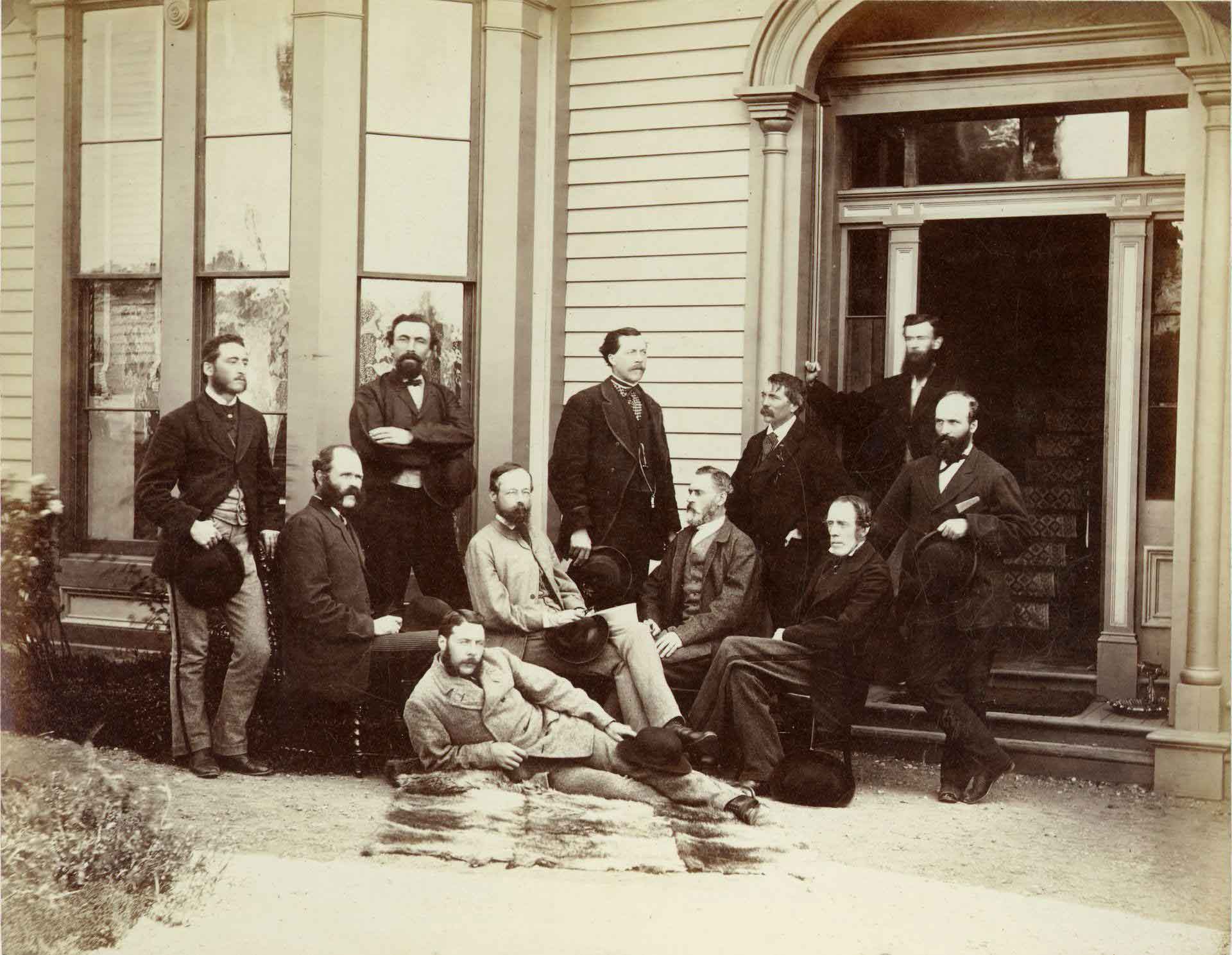
The First Canadian Pacific R.R. and Geological Survey parties for British Columbia, July 22 1871
Left to right : L. N. Rheaumis, Roderick McLennan, A. S. Hall, West West Ireland, Alfred Selwyn, Alex Maclennan, Walter Moberly, C. E. Gilette, James Richardson, — — McDonald, George Watt. Toronto Public Library
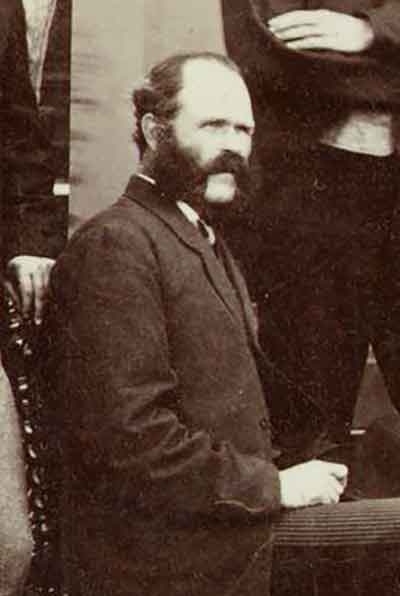
Detail: Roderick McLennan Toronto Public Library
Roderick M. McLennan
b. 1805 — Lancaster, Ontario
d. 1908 — Toronto
In 1871-72, Canadian Pacific Railway surveyors Roderick McLennan and Charles Horetzky made a reconnaisance from the Big Bend of the Columbia River up to the North Thompson River. McLennan left Kamloops leading Survey Parties Q and R on August 19, 1871, and in October decided to winter his party in the vicinity of Tête Jaune Cache. He built a camp four or five miles upstream from the Canoe River on what consequently came to be named Camp Creek. In 1872, also leading Q and R, he undertook an expedition to Moose Lake. [2]
Named for Gabriel Franchère [1786–1863].
A French Canadian author and explorer of the Pacific Northwest, Franchère joined the Pacific Fur Company as a merchant apprentice, arriving at Fort Astoria on the Tonquin. After Astoria was sold to the North West Company, Franchère returned to Montréal overland in 1814, crossing the Athabasca Pass on May 14. He was employed for a time by John Jacob Astor in Montréal. He wrote Narrative of a Voyage to the Northwest Coast of America, published in 1819:
On the morning of the 14th of May we began to climb the mountain, which is very steep. Fortunately the preceding night had been cold and the snow was frozen hard enough to carry our weight. We had to rest every few minutes, the climb being very difficult and the exercise exhausting. Finally after two or three hours of unbelievable effort and fatigue we reached the summit and followed in the footprints of those who had gone before us. Our route lay between two high mountains and soon became tiring because of the depth of the snow, which being softened by the sun’s rays, could no longer bear our weight as it had done in the morning, so that we had to walk in the footsteps of those ahead of us, sinking up to our knees as if putting on an enormous pair of boots at each step. At last we came to a hollow that our guide said was a small lake, though we could not recognize it as it was covered in snow, and we stopped there for the night. These lakes (for there are two) are situated at the summit of the face of the mountain [1].
(The lakes are the Committee Punch Bowl.)
William James Topley
b. 1845
d. 1930 — Vancouver
Topley was noted for his portraiture of Canadian politicians and was a business partner of William Notman, having taken over Notman’s Ottawa studio in 1872. A large number of photographs by Topley are now in the collection of Library and Archives Canada, including approximately 150,000 glass plates negatives and a set of 66 index albums covering the entire history of his Ottawa studios from 1868 until 1923 [1].
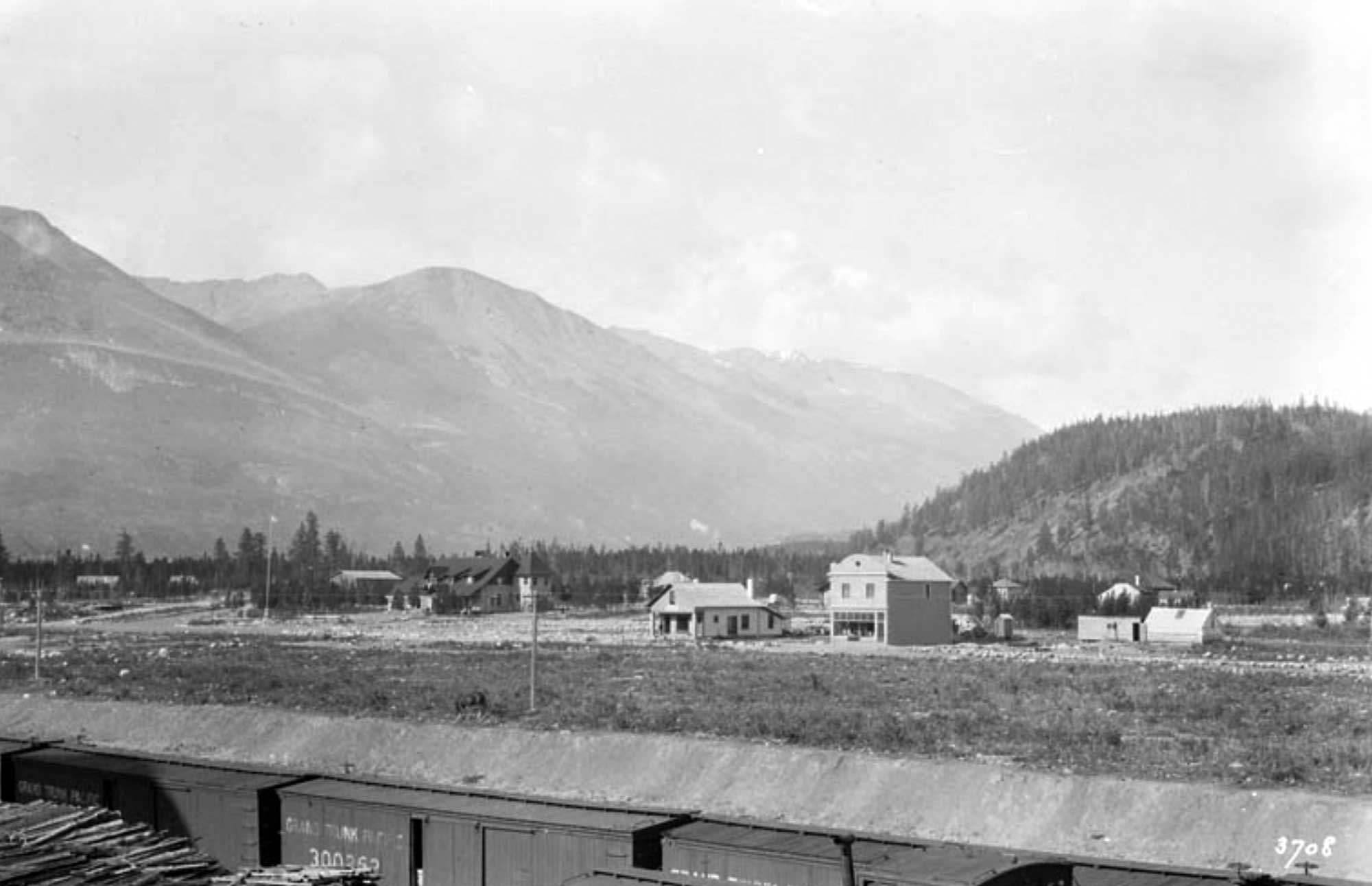
Jasper from top of coal chutes
Photo: William James Topley, 1914
Library and Archives Canada [accessed 10 October 2025]
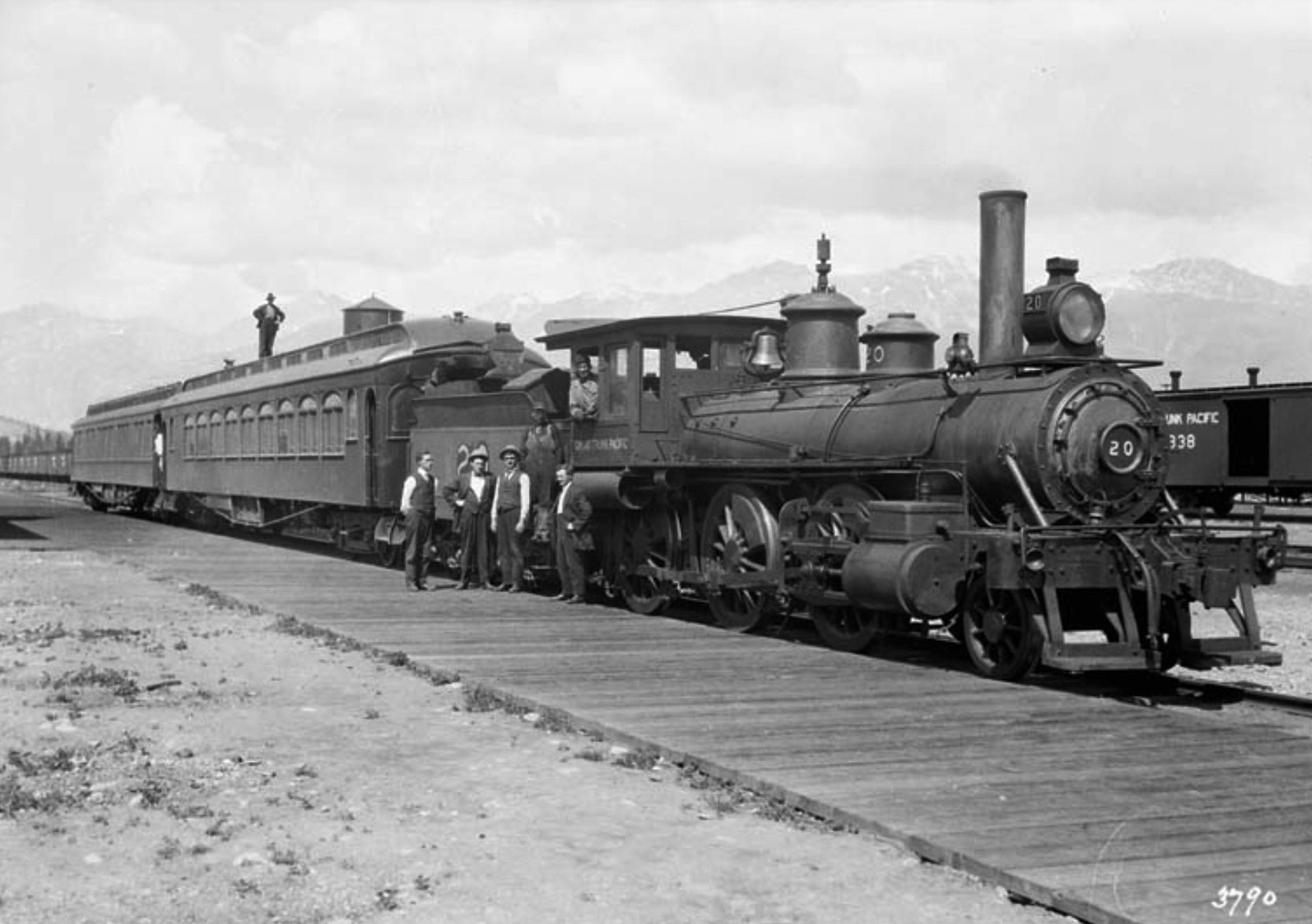
Special Train for Sir A. Conan Doyle to Mount Robson
Photo: William James Topley, 1914
Library and Archives Canada [accessed 10 October 2025]
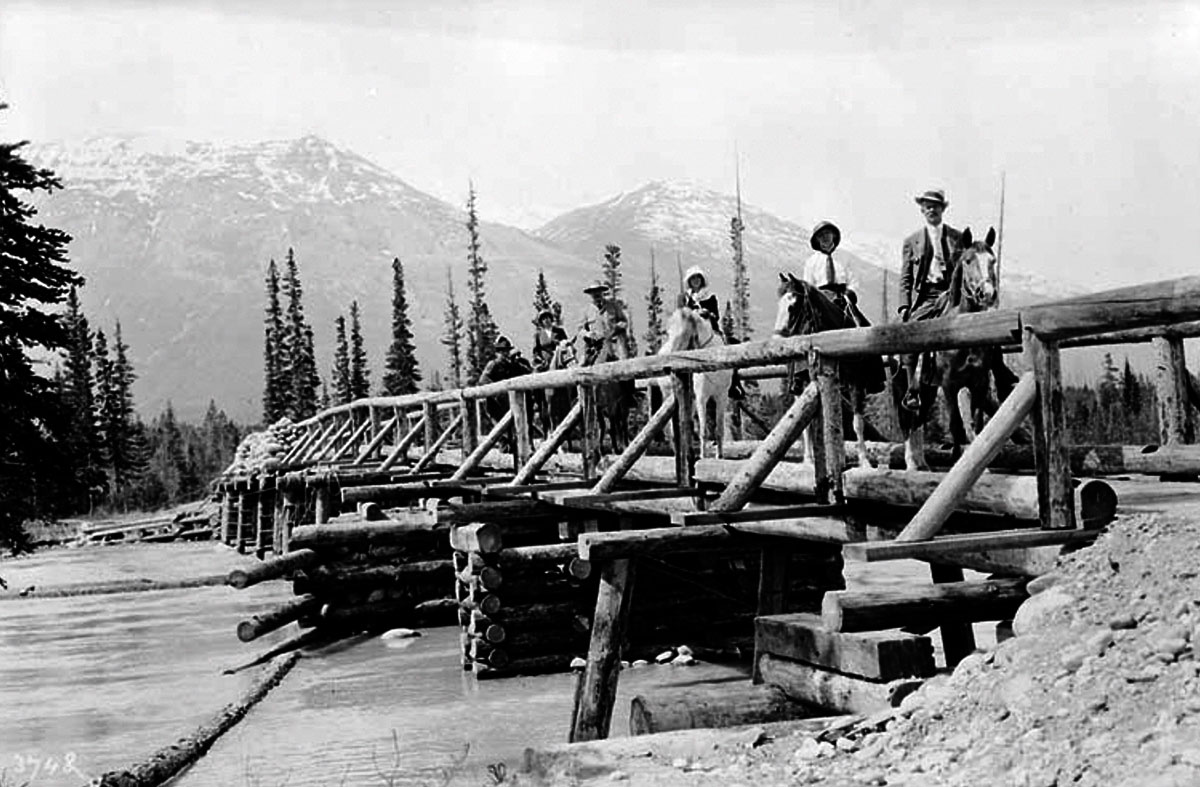
Crossing Athabasca river, Sir A. Conan Doyle and party on horseback
Photo: William James Topley, 1914
Library and Archives Canada [accessed 10 October 2025]
![Press Excursion Party at Summit [Yellowhead Pass] Photo: William James Topley, 1914](/wp-content/uploads/2025/10/topley-excursion-party.jpg)
Press Excursion Party at Summit [Yellowhead Pass]
Photo: William James Topley, 1914
Library and Archives Canada [accessed 10 October 2025]
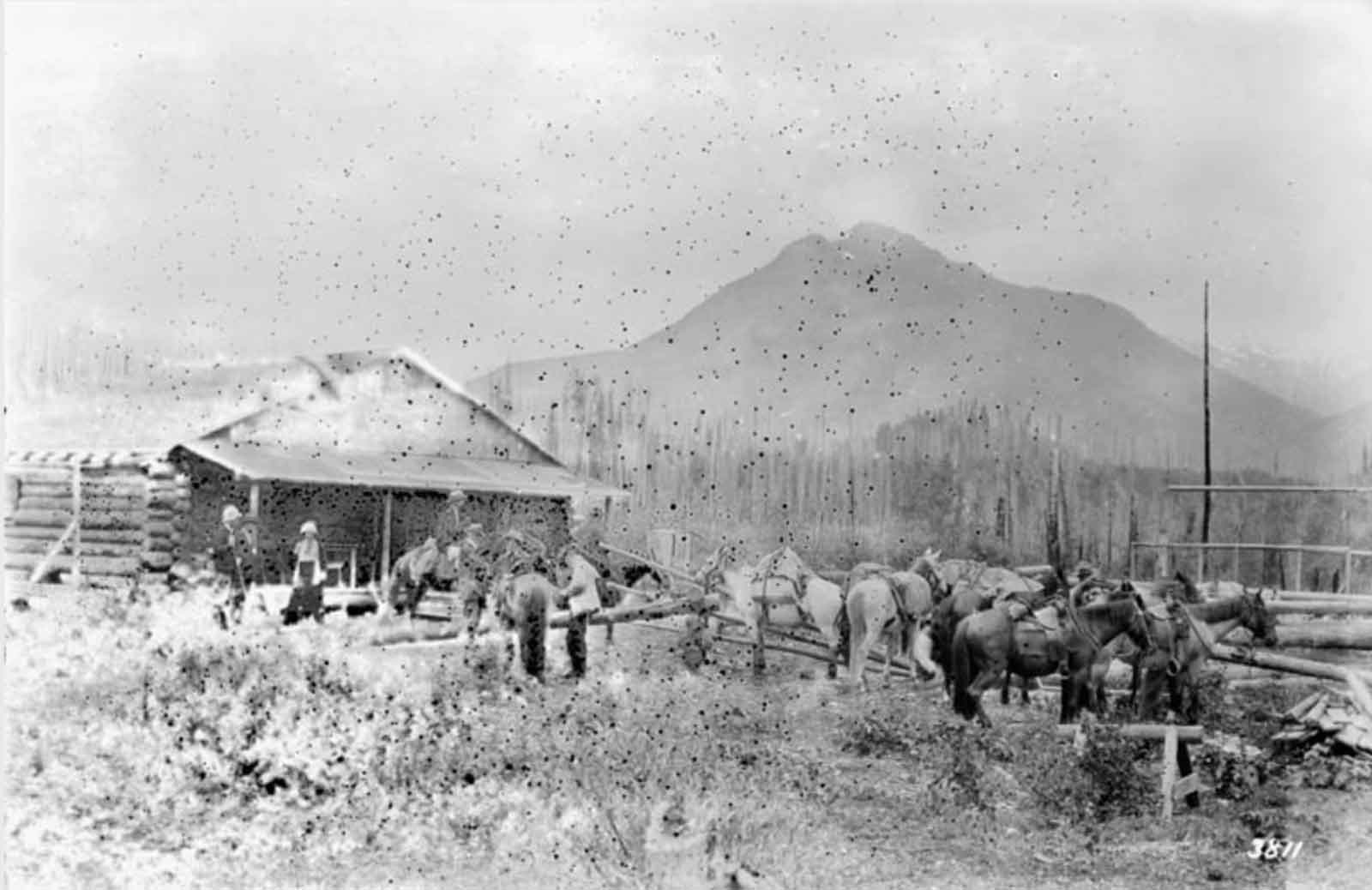
Leaving Donald Phillips’s Camp near Robson Railway Station
Photo: William James Topley, 1914
Library and Archives Canada [accessed 10 October 2025]
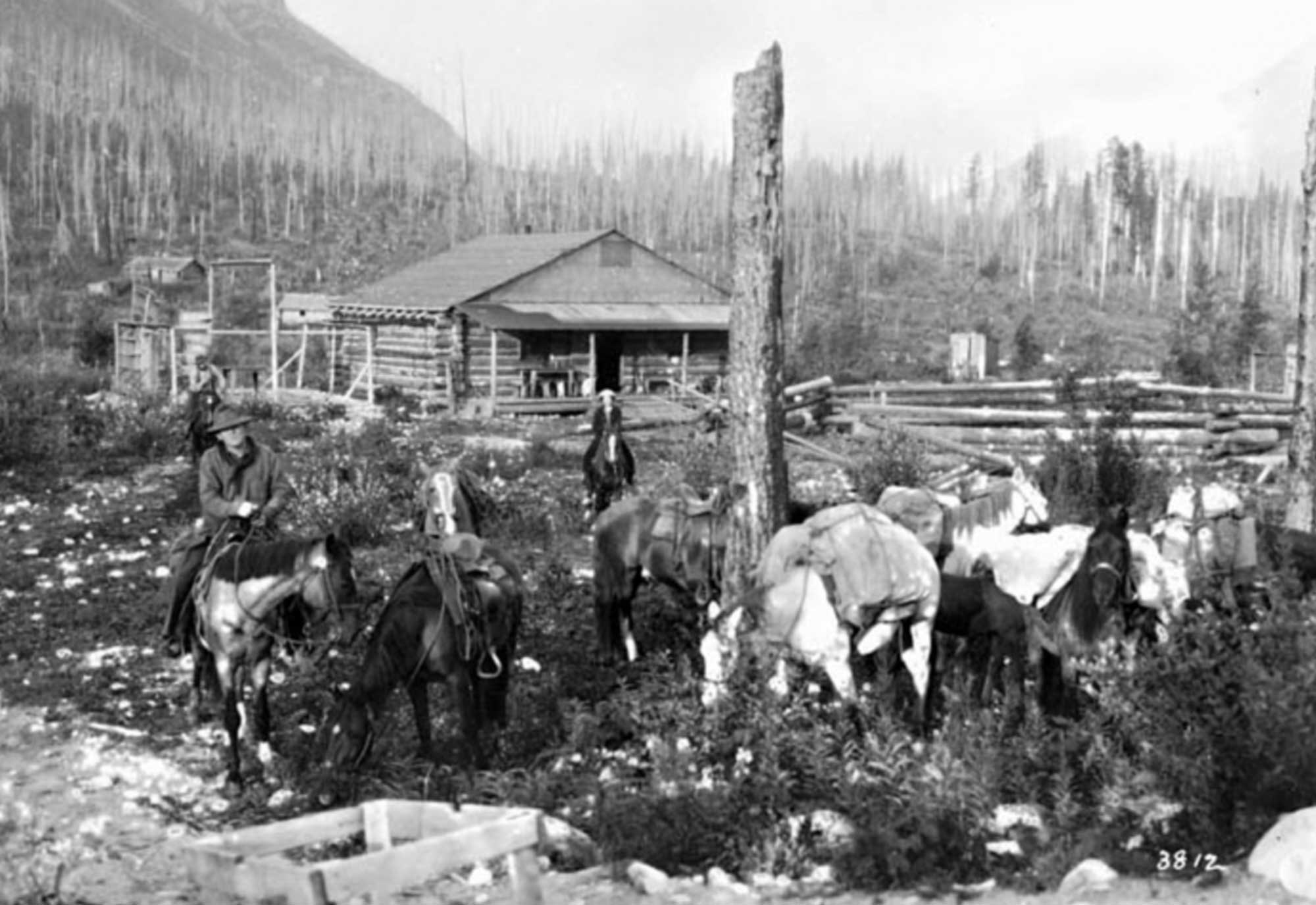
Pack train at Donald Phillips’s camp
Photo: William James Topley, 1914
Library and Archives Canada [accessed 10 October 2025]
June 11 – 19, 1914
In the spring of 1914, Sir Arthur Conan Doyle [1859–1930] (of Sherlock Holmes fame) was invited to travel on the newly opened Grand Trunk Pacific Railway from Montreal to Jasper National Park. Conan Doyle accepted the invitation, and he and his wife, Jean Leckie, conducted the trip between May and July, 1914. The point of the expedition was to promote the Canadian West and its newly minted national park.
The official photographer for the journey was the celebrated William James Topley [1845–1930]. Topley’s son-in-law, Robert Chamberlain Westover Lett [1870–1957], was travelling passenger and olonization agent for the Grand Trunk Pacific, and persuaded Topley to photograph Conan Doyle’s travels.
On June 11, Conan Doyle and his wife travelled to the town of Jasper. A special train was organized to take the Doyle party to visit the area near Mount Robson [1] [2].
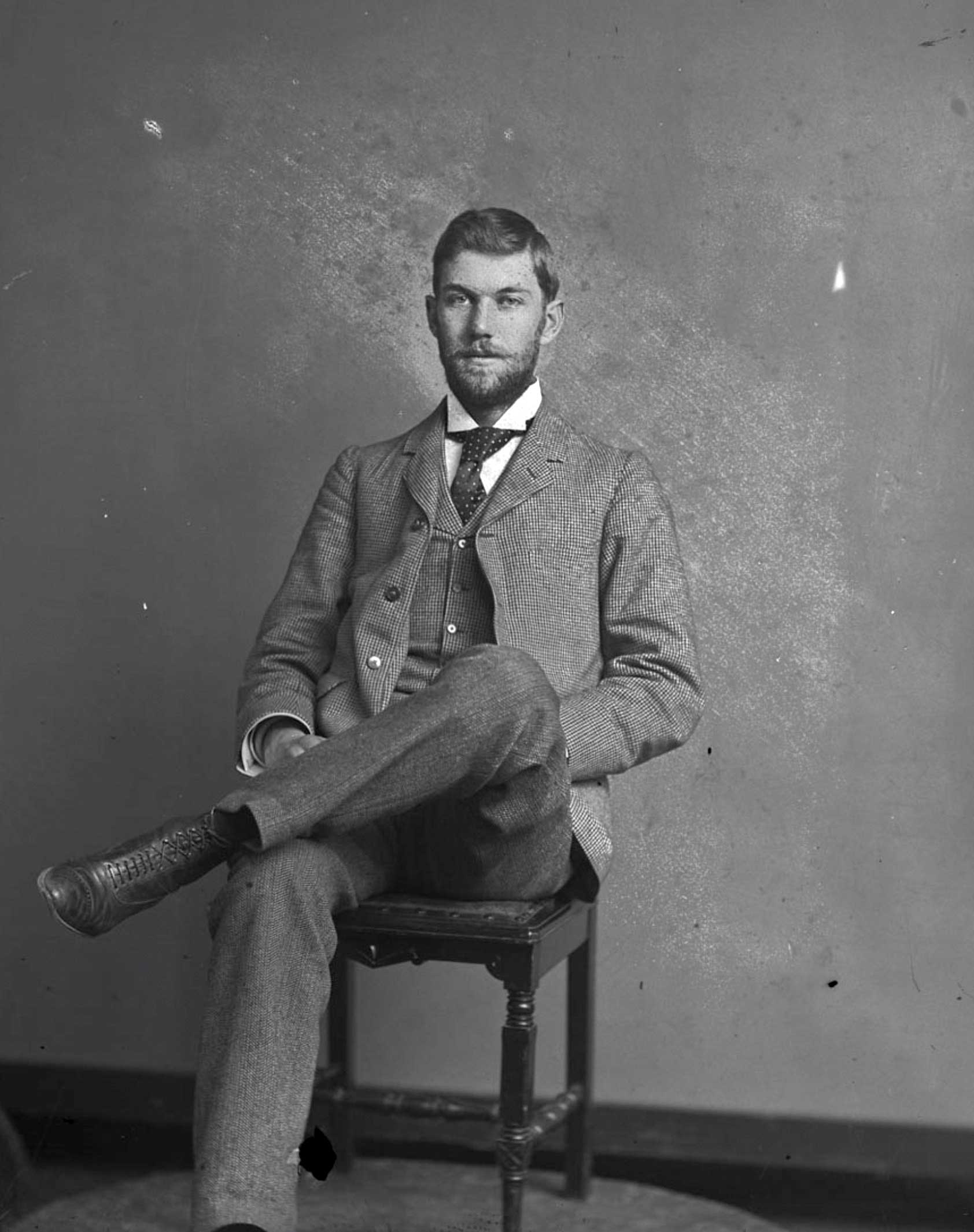
Mr. R. C. W. Lett
Photo: William Topley, Ottawa, 1895
Library and Archives Canada [accessed 5 October 2025]
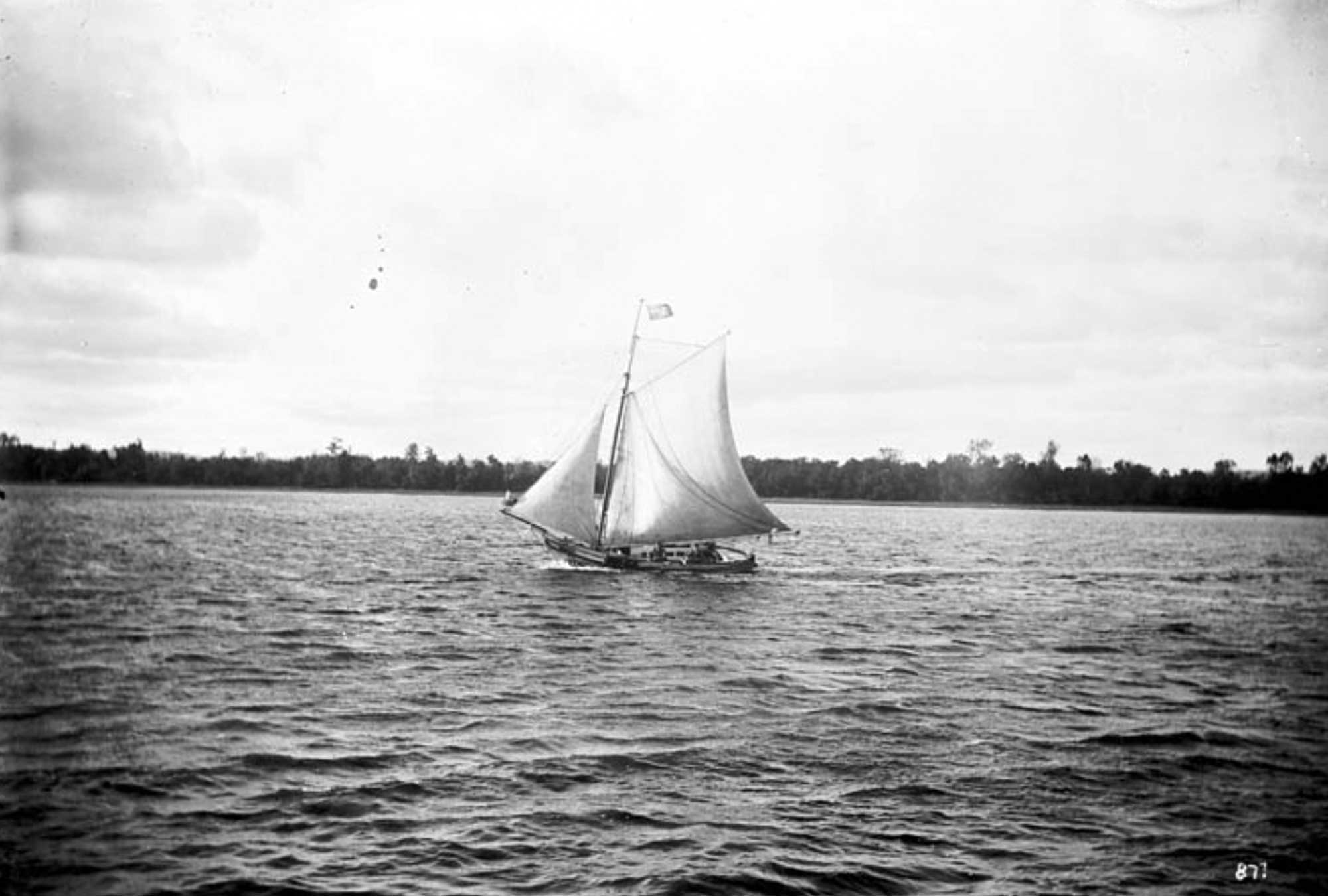
R. C. W. Lett’s Yacht on the Ottawa River
Photo: William Topley, Ottawa, n.d.
Library and Archives Canada [accessed 5 October 2025]
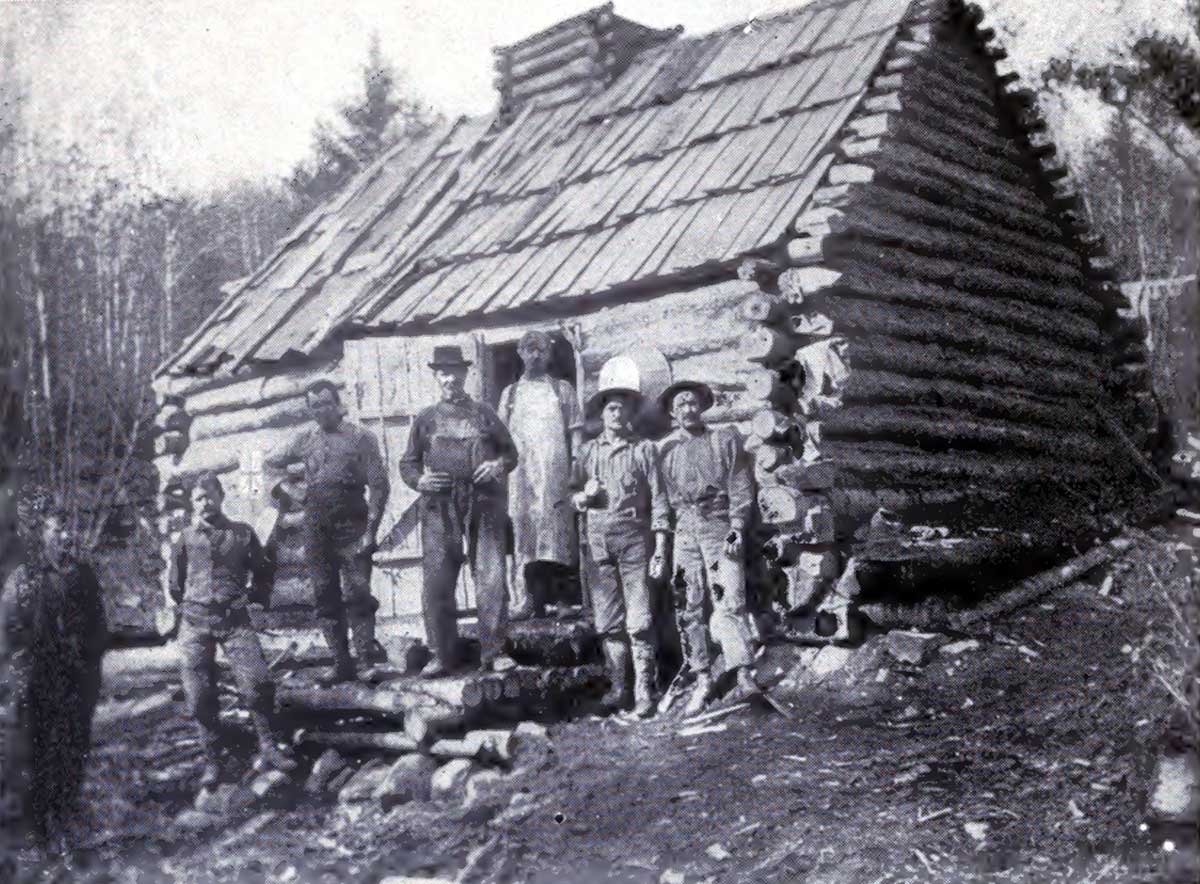
Shack built on Wapoose River by Mr. Lett’s prospecting party with eleven nails.
Photo: R. C. W. Lett
From Talbot, Making Good in Canada, 1912, frontispiece
Internet Archive [accessed 4 October 2025]
Robert Chamberlain Westover Lett
b. 21 May 1870 — Ottawa, Ontario, Canada
d. 3 February 1957 — Saanich, BC, Canada
Brother of Rebecca Lett, Andrew John Lett, William Pittman Lett II, Anna Elizabeth Lett, Frederick Piercy Austin Lett, Norman Harold Hinton Lett and Maria Dulcibella Lett.
[1].
———— 115 [2]
Frederick Arthur Ambrose Talbot [1880–1924]
The new garden of Canada. By pack-horse and canoe through undeveloped new British Columbia. London: Cassell, 1911
1910:
p. vii
I was one of a party of six which set out from the western fringe of civilisation in Alberta to make the “North-West Passage” by land, threading 1,200 miles of wonderful, practically unknown country-the interior of New Caledonia, or, as it is now officially called, New British Columbia. The party consisted of Harry R. Charlton, Montreal; Robert C. W. Lett, Winnipeg; H. D. Lowry, Washington, U.S.A.; G. Horne Russell, Montreal; a photographer, and myself. The first and third left the party at Tête Jaune Cache to return. The object of my investigations was to form some notion of the economic and scenic value of the country traversed.
Lett, who can manage a dug-out as well as any Indian
shot a bear
p 129
Two legs of bear were lying in the prow, and we were pulling along gaily in the misty morning, when we heard a furious screech over our heads. Looking up, there was a large bald-headed eagle poised about two hundred feet above, and evidently attracted by the sight of the fresh meat. He swooped down a bit, looking a trifle aggressive, and Lett whipped out his Browning automatic and let drive seven shots in rapid succession
p. 209
Lett grabbed up his line and a stick to form an im- promptu rod, ours having been left behind on the Little Smoky River. The dug-out was soon pulling towards the centre of the lake with the troll out. Presently we saw a vicious tug, and an instant later there was a bright flash in the air as the fish made a leap of about ten feet. The fighting and plunging went on for about ten minutes, and then the dug-out came in with a sharp shoot with another quivering specimen lying in the bottom. When weighed it tipped the beam at 8| lb. , and they were two as fine specimens of the trout family as one could desire to land. Our American visitor said they were “fair devils ” when hooked, and would often jump clean over the canoe, while their rushes made the pike’s movements a mere tortoise crawl in comparison. Lett confessed that his catch had given him a lively five minutes, accustomed though he was to all classes of fish found in Canadian river waters.
a competent hunter and fisherman and boatsman
———- 131 [3]
Wheeler, Arthur Oliver [1860-1945 ]. “The Alpine Club of Canada’s expedition to Jasper Park, Yellowhead Pass and Mount Robson region, 1911.” Canadian Alpine Journal, Vol. 4 (1912):9-80
We left Edmonton for the West by the Grand Trunk Pacific train on the 1st July. Attached to the train was the private car of W. P. Hinton, General Passenger Agent. With him were H. R. Charlton, General Advertising Agent, and R. C. W. Lett, Travelling Passenger and Colonization Agent.
——–562 [4]
Talbot, Frederick Arthur Ambrose [1880–1924]. Making Good in Canada. London: Adam and Charles Black, 1912
one of a series of “books for colonists”
The material in the book is undated, other than it is before 1912.
This is the true spirit in which the new arrival must view and attack things Canadian. No calling is too humble ; no occupation should be despised.
Among the occupations: packing, roadbuilding, trapping, wood cutting, game and fre wardens, prospecting, farmingm lumbering, logging, and timber cruising.
let appear in chapter 4, cutting trails and building roads
chapter 5, trapping
chapter 9, game and fire wardens.
p 122
One of the members of our party on this occasion, Mr. Robert C. W. Lett, a few years before had thrown in his lot with these lonely patrollers, for the purposes of restoring his health. The scene of his activity was in Algonquin Park, some way up in the Highlands of Ontario, and he painted me some very powerful pictures of the life of this official under all varying conditions.…
During the summer, life as a game-warden in such a park is enviable to those compelled to drudge in the suffocating and broiling city, because the men spend the whole of their time in the open air, which, bearing in mind the situation and altitude of the reserve, is a most invigorating tonic.
chapter 14, prospecting for minerals
p. 186
A graphic and intimate impression of the adventurous life of the mineral prospector was conveyed to me one night round the blazing camp fire, by my companion on the trail, Robert C. W. Lett. When he broke away from the lonely calling of game-warden in Algonquin Park, he embarked upon a prospecting expedition. Two experienced companions joined him in this pursuit of fortune, the projected field for their labours being one of the innermost recesses of Ontario, which has since gained fame as the Gowganda country.
Shack built on Wapoose River by Mr. Lett’s prospecting party with eleven nails.
————-165 [5]
Grand Trunk Pacific Railway. The Canadian Rockies. Yellowhead Pass Route. Winnipeg: Issued by the General Passenger Department, G.T.P. Railway, 1913
165
R.C.W. Lett, Tourist and Colonization Agent, GTP, Winnipeg, Manitoba
Ealry this year a Bill was passed, setting aside a large area in the Yellowhead Pass district, which will be known as Mount Robson Park. The central feature of this Park will be the famous Mount Robson, the highest peak in the Canadian Rockies, and it is the itnention of the Grand Trunk Pacific Railway Company to build a large up-to-date hotel in the park, from which one of the best views of the mountain will be obtained.
——–260 walcott [6]
With our party in 1912 we had Mr. Harry H. Blagden, who accompanied the expedition in 1911; also Mr. R. C. W. Lett, of the Grand Trunk Pacific Railway, who took many fine photographs the first two weeks of the trip; Sidney S. Walcott, Closson Otto, Dr. I. F. Burgin, and Arthur Brown, all of whom were qualified by experience and physique to overcome the physical obstacles and hardships of the trip.
—-307 Wheeler [7]
The following were in attendance at the Robson Camp:
among the honorary members R. C. W. Lett, GTP Ry,Winnipeg.
———669 doyle [8]
In 1914, R.C.W. held a prominent position with the Grand Trunk Railway and persuaded his father-in-law, the noted Ottawa photographer William James Topley, to photograph Sir Arthur Conan Doyle on his rail trip through Western Canada in June of that year.
——– 920 – dcb topley [9]
Topley and his wife, who died in 1927, spent much of their last years in Edmonton with their daughter, Helena Sarah, and son-in-law, Robert C. W. Lett, an employee of the Grand Trunk Pacific Railway who had probably been influential in the naming of Topley, a community on the GTP line in northern British Columbia.
March 1906
When the Alpine Club of Canada was organized in 1906, its first president, Arthur Oliver Wheeler [1860–1945], suggested to Arthur Philemon Coleman [1852–1939] that he undertake the conquest of the mountain. [1]
Founding member Elizabeth Parker [1856–1944] presented the rational of the formation of the Alpine Club of Canada:
“The objects of the Club are : (I) the promotion of scientific study and the exploration of Canadian alpine and glacial regions; (2) the cultivation of Art in relation to mountain scenery ; (3) the education of Canadians to an appreciation of their mountain heritage; (4) the encouragement, of the mountain craft and the opening of new regions as a national playground ; (5) the preservation of the natural beauties of the mountain places and of the fauna and flora in their habitat; (6) and the interchange of ideas with other Alpine organizations.”[2]
In addition to these objects, Parker proclaimed the moral virtues of mountaineering:
But the peril is, that men become satiated with wheat, and there, follows that effeteness which is worse than the effeteness of an unbalanced culture. Among other correctives none is more effective than this of the exercise of the mountain-craft. No sport is so likely to cure a fool of his foolishness as the steady pull, with a peril or two of another sort attending, of a season’s mountain climbing in one of those “thrilling regions of thick-ribbed ice” in the wild alpine playground of Canada. The ethical value of mountaineering is a subject upon which our statesmen would do well to ponder; and there is a considerable Canadian Alpine literature from which they may gather data.
Any young man of latent intellectual and moral force, who comes to close grips with the waiting, challenging mountains, and puts one summit after another beneath the soles of his feet, has gained immensely in the Spartan virtues. Moreover, he has, by climbing to these skiey stations and standing face to face with Infinitude, learned some things he may not tell, because they are unspeakable. It is given to very few, to utter such experiences. But there comes to the mountaineer of pure mind and willing spirit the sense of which Wordsworth tells, of the presence interfused in Nature; the presence that dwells among the sheer peaks and in the living air and the blue sky and in the mind of man; the motion and the spirit that rolls through all things.… Browning sums it in his swift way : “which fools call Nature and I call God.
Parker also gave a sketch of the ACC, with a report of its progress up to April 15, 1907:
To begin before the beginning, it was foreshadowed twenty-four years ago on a clear, bracing, sunny day, when Sir Sandford Fleming, K.C.M.G., his son, S. Hall Fleming, the late Principal Grant of Queen’s University, and party with pack train emerged from the slow, difficult forest trail and rested at the welcome meadow on Rogers’ pass. Inspired by the glacier-mountains rising far and high about them, they resolved themselves into a Canadian Alpine Club; elected officers; passed a resolution of gratitude to Major Rogers, discoverer of the pass; proposed the conquest of the most formidable peak in the whole region; drank the Club’s health in a stream sparkling at their feet; and so ended. [3]
In the photo it’s identified as “Tau Peak,” and Walcott also refers to “Tau Pass.”
The mountain does not have an official name.